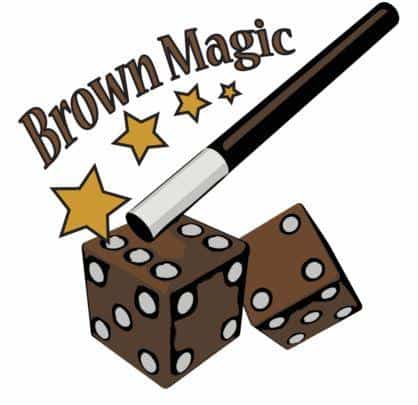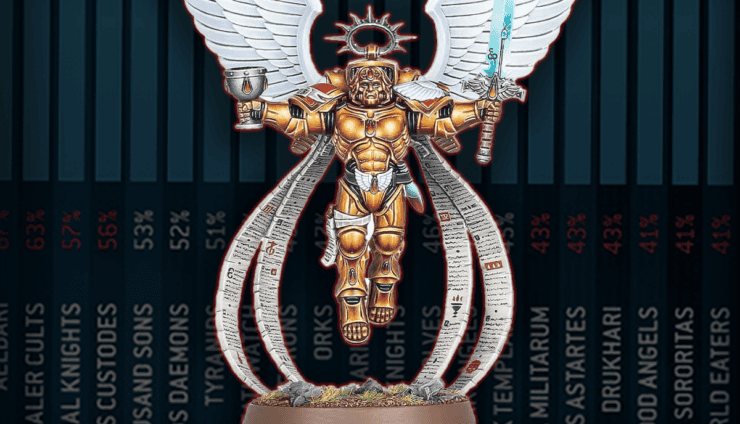
Today I’m here to talk about the role of dice in 40k (yay, puns!). This is, in my opinion, the most important aspect of 40k, and this topic has so many facets. The truest and greatest separator between a good 40k player and a bad 40k player is how they manage the impact dice have in a game.
Today I’m going to break down the idea of risk mitigation in 40k. I’m also going to try and outline a very key issue many players struggle with: blaming dice to justify their losses. In my next article, I’m going to try and outline how you can change your perspective on 40k, work towards not blaming dice, and instead start taking responsibility for your losses. This is an important step as you work towards improving. Finally, depending on interest and feedback I may put out a 3rd part to the series where I play a real game and point out specific moves and decisions I make to mitigate the impact of dice, so you know exactly what to look out for in your own games.
So without further ado, let’s embark on this lovely adventure together!
Let me take a hop, skip, and a jump over to 40k’s step-cousin: Chess. Chess is a tactical game with effectively infinite possibilities, just like 40k. But there is no aspect of luck in chess, everything is a known quantity and nothing is variable. There are no “risky plays” in chess, a plan will work or not, simply because it is a better or worse plan than the one your opponent has. While this may lead many people to believe that chess is a more competitive game than 40k, it does also introduce a new skill set to 40k which chess does not have, the skill of risk management.
What is risk management: “Risk management is the identification, evaluation, and prioritization of risks, followed by coordinated and economical application of resources to minimize, monitor, and control the probability or impact of unfortunate events or to maximize the realization of opportunities. Risk management’s objective is to assure uncertainty does not deflect the endeavor from the business goals.” –https://en.wikipedia.org/wiki/Risk_management
Well, despite all my college professors shaming me for using Wikipedia as a source in my research papers, this definition seems to work pretty well.
Sooo what does that wordy nonsense mean in terms of Warhammer? It’s basically the idea that in Warhammer a certain course of action only has a certain percentage chance of working (this is where dice come in). So you need to identify the odds of that course of action working are, weigh the benefit of it working against the repercussions of it failing, and determine if it’s a good idea or not.
I typically find many, many, maaaany Warhammer players just building lists, moving units, shooting units, and charging units “because it makes sense” or “because they feel like they should”. Not only that, but when things don’t pan out, a lot of players typically blame their dice, and use them as an excuse for why their plan failed.
You need to really understand the odds of success and failure when making plans. Without understanding the odds to least some degree you’re just basing decisions on intuition rather than any sort of rational reasoning. That is a recipe for failure.
Example time!
A unit of 10 Dark reapers shooting a Leviathan Flyrant. Most people would assume 10 Dark Reapers would put down a Flyrant pretty well, or at least put a huge dent in it. They would take their turn accordingly, and make their moves based on the idea that 10 Dark Reapers should at least significantly damage the Flyrant. Then when the Flyrant shrugs the 10 reaper shots off without a care the Dark Reaper player would be terribly upset and blame the dice for letting him down. When in reality it actually takes 22-23 dark reaper shots to reasonably put down 1 leviathan Flyrant.
Aaaand here’s some basic non-calculator math for you nerds who care. A Flyrant has 12 wounds and 6+ fnp, so effectively 14-15 wounds. To deal 15 wounds, (reapers deal damage in increments of 3) you need to get 5 failed saves. To generate 5 failed saves through a 4+ invulnerable, you need 10 wounds to go through. To generate 10 wounds you need 15 hits since you are wounding on 3s. To generate 15 hits you need to toss approximately 22-23 shots. Therefore, the 10 shots you threw at the Flyrant shouldn’t even kill half of it, not even managing to bring it down a bracket.
This is some really basic 10-second math you can do in game, in your head, without even busting out your calculator.
After understanding the odds of a plan working, the next step is to understand the benefit vs. cost of success/failure. If a certain plan has a 66% chance of working and winning the game for you, and a 33% chance of failing and losing you the game, is it the right move to go for? The answer isn’t clear-cut and there are a lot of external factors which affect the answer to that question, but the important take away for right now is to just start to recognize that it’s a question that warrants being asked.
In the situation above, maybe NOT going for the 66% chance for a win is the better move if playing for the long haul will lead to a greater likelihood of victory in the long run. Of course, at the opportunity cost of not winning (or losing) immediately. On the flip side, maybe it is the right move if you’re much more likely to lose in the long run unless you take the “risky” move now.
Understanding the probability of something happening, and subsequently recognizing the benefits of success and weighing them against their costs of failure is ultimate what risk management is all about; and in turn what you need to understand intimately to succeed at 40k.
Once players understand risk management intimately it’s time to start focusing on playing better to mitigate risk. What I mean by that is making the most out of the non-variables in 40k: list building, movement, stratagems, and interactions that work without dice or chance of failure.
Those topics are going to be the main focus of my next article, but for now, just focus on really becoming intimate with the concept of risk management and try to identify situations in your games where you make decisions with this concept in mind.
That’s all, for now, folks, be sure to check out more tips on how YOU can beef up your game and make that first step to competitive events over on my site, Brown Magic:










